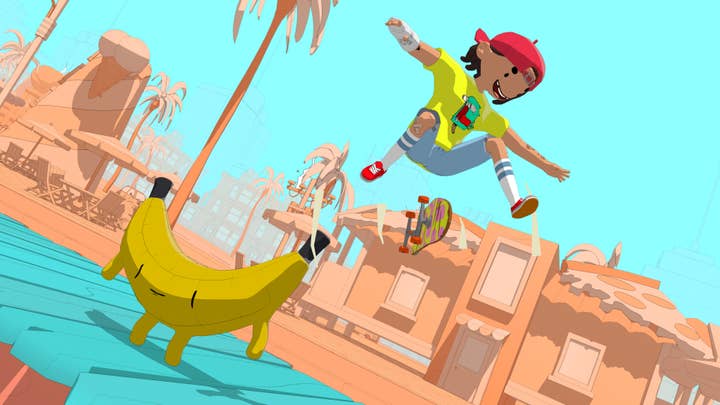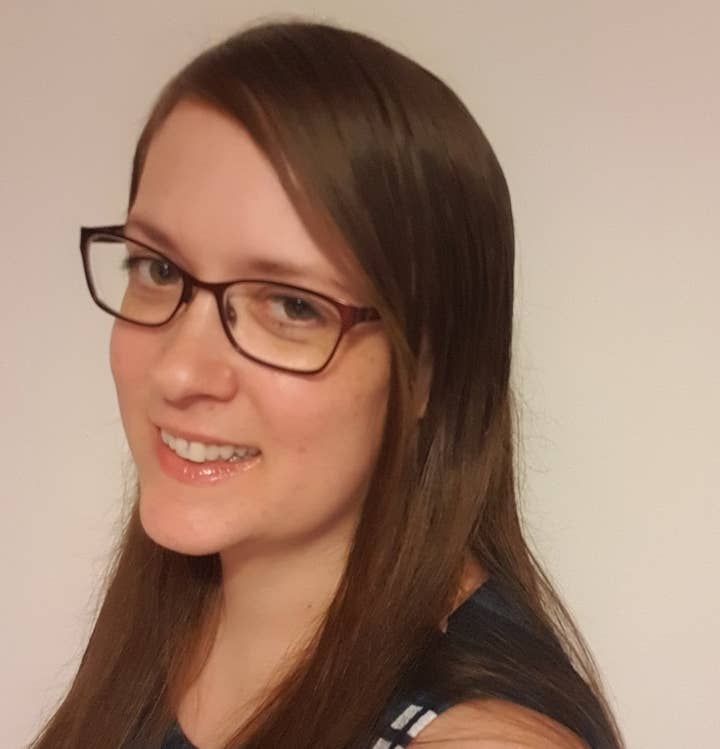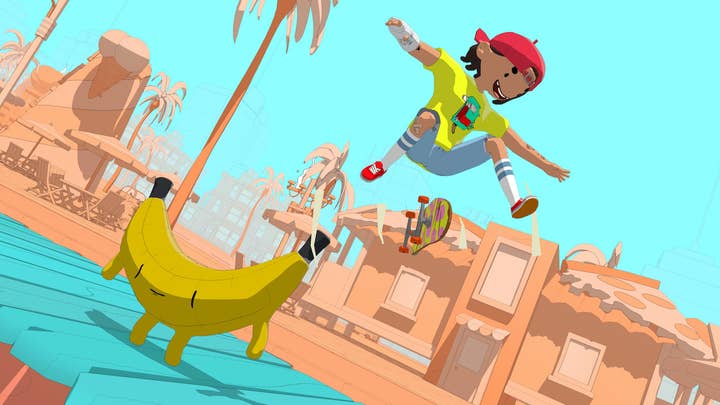How to get a job as a technical artist
The GamesIndustry.biz Academy explores the routes into becoming a technical artist, one of the industry's most in-demand, but difficult to define, roles
Our guides can help you to find the right path to the games industry job of your dreams. You can read our other in-depth guides on how to get a job in the games industry on this page, covering various areas of expertise.
You can also read our interview with Atomhawk's technical art director Liam Fleming if you want an introduction to technical art.
If you ask multiple technical artists what they do, the chances are you'll get very different responses. Although there are generalists, it is more often an umbrella that encompasses a number of specialist disciplines such as environment, shaders, VFX, and pipeline, to name just a few, so you could be involved more with the front-end or the back-end. Naturally, this also varies hugely from studio to studio.
However, if we're to explain the essence of the role, then Jodie Azhar, technical art director at Silver Rain Games says: "Technical artists are problem solvers."
"Quite often they will be creating tools to solve these problems, for instance creating a procedural system to save time for an environment artist from doing very repetitive tasks. It also involves being the bridge between the art and programming sides of game development. They can act like translators between artists and programmers," she adds.
"They need to understand artists' processes and how they want something to look visually, and then communicate with programmers to ensure that it's implemented in-game correctly to look the way the artists want, while also being performant and exposing any control to artists in a format that makes sense for them."
Azhar has been a technical artist in the games industry for 13 years, having also worked at Rebellion and Creative Assembly, and initially specialising in technical animation, which is considered its own discipline these days -- such is the evolving nature of the role.
We ask her and three other technical artists of varying seniority levels how to go about having a career in a role highly sought after by studios in what can be described as a skill filler.
- What education do I need to get a job as a technical artist?
- What experience do I need to get a job in technical art?
- What qualities and skills do I need to be a technical artist?
- What are the common misconceptions about technical art?
- What are the career progression opportunities of a technical artist?
- Advice and resources for new and aspiring technical artists

What education do I need to get a job as a technical artist?
Our interviewees are rather split when it comes to whether or not you necessarily need a formal qualification in order to get into technical art. For starters, a course in technical art is especially common, and as most technical artists began their careers from either the art side or programming side, their qualifications also tend to be in those respective areas, although they nonetheless do exist.
"Bournemouth University has a course called Computer Animation - Technical Arts created specifically to develop technical arts skills for games, TV and film production," Azhar explains. "This was the course I studied and the combination of programming, maths, 3D art and animation still describes my work as a technical artist today, and gave me a strong foundation for the skills I have developed throughout my career."
Kristrun Fridriksdottir, a technical artist who previously worked at Sports Interactive, had a somewhat different educational route, having first studied IT before taking a game degree focused on 3D modelling and rigging, and then a Masters in anatomy -- though that variety is what gives technical artists their own unique strengths.
"What you studied is going to influence where you would go in tech art," says Fridriksdottir. "If you're from an environment background, you might end up as an environment tech artist, while with a software engineering background, you're more likely to be in pipeline."
"The more that a game wants to achieve technically with its art and animation the more need there is for technical artists"Jodie Azhar, Silver Rain Games
Other technical artists say being able to demonstrate your skills and understanding through a strong portfolio is much more important than having hard skills or qualifications to hand. According to Radical Forge CEO and technical artist Bruce Slater: "YouTube is your best friend."
He recommends a whole range of software and tools people should learn, including Houdini, Blender Geometry nodes, Shaders, Python/MEL Scripting, Photoshop, Maya, 3DS Max, as well as game engines like Unreal and Unity.
Of course, with so many things to learn, where to begin can also be daunting, so while formal training may not be required -- and indeed, some people come into technical art much later in their careers -- Azhar still recommends it for those who can afford it.
"For those coming from the art side it's important to find out why and how something works, rather than just copying tutorials," she explains. "With no formal training, it can be harder as it relies on you finding out what you need to know and you usually won't have the vocabulary for knowing what to look for without prior game development experience."
On the other hand, being able to find that information and adapt to the needs of a studio also arguably summarises the job.
"If I could be quite facetious, it's mainly about, 'Can you Google stuff?'" says Dickie Monday, a technical artist at OlliOlli World developer Roll7. "I could be not amazing at anything, but give me three days and I will C+ it."

What experience do I need to get a job in technical art?
It's rare for people to join the games industry as a technical artist right out the gate as it often requires a lot of experience and knowledge. As mentioned previously, it's also a role that people in the industry tend to gravitate towards either from the art or programming side.
"My own path was falling into enjoying Shader, VFX and optimizations work in games," explains Slater, whose studio also contracts for other large developers, with projects including Minecraft Dungeons and Zombie Army 4. "As time went on, that's the stuff we needed to do for more and more projects as they all did art that needed to be optimised to work on different projects. So I kind of fell into it, similar to how I fell into being CEO of a 42-person studio."
That isn't to say that entry-level positions don't exist, Fridriksdottir points out.
"If it is a very big studio with a large enough team, they would be able to take on a junior, who would more likely be a specialised junior," she says. "It's more limited as a generalist position in a smaller company where you might be the only [technical artist] responsible for a vast amount of different types of knowledge and a lot of troubleshooting."
“A technical artist is not a bad background to have when you start your own company because you are fully capable of creating a lot of artwork and code yourself"Kristrun Fridriksdottir, Crescent Games
For that reason, it's likely entry-level roles are focused on areas such as VFX, environment or shaders, and this will vary depending on a studio's needs to address specific problems that need solving in their projects.
In any case, you will need to be able to demonstrate your problem-solving abilities through a strong portfolio, and these don't necessarily need to be from professional experience, as you can be a hobbyist or solo developer, or also collaborate with other people at game jams. Monday adds that people are often eager to collaborate with a technical artist.
"There's lots of artists out there who are building portfolios who would quite like a bit of pizazz that they don't know how to solve themselves or would find it very difficult for them to solve themselves," he says.
"Because of the different types of problems a technical artist might solve this could either be through videos or screenshots of what you worked on with a breakdown of what's shown that briefly explains how it was implemented technically to overcome the problems," says Azhar. "The key thing is to clearly show the problems you identified and how you went about solving them."
In other words, rather than showing the final beautiful end-product, Fridriksdottir advises people to "show the steps and layers", as those in a hiring position "want to see [your] thought process, so when you have a map or a model and it has multiple texture maps, show that."

What qualities and skills do I need to be a technical artist?
Qualifications and experience will help you in becoming a technical artist, as well as knowledge in programming languages like C++, Python and Unreal Blueprint Scripting, and other relevant tools. But you will have greater success in the role by being able to demonstrate the following three skills.
- 1. Problem-solving
As Azhar mentioned earlier, troubleshooting and being willing and able to solve problems in any capacity is essentially what technical art is all about.
Monday believes this skillset is more important than your qualification or experience, citing a fellow technical artist at Roll7 who has done the same level of work as him despite having less years experience and dealing with problems she had no prior experience in, but has been capable because of her knack for problem-solving.
"I would say that most people just don't really understand what a technical artist is, and neither do I really! [...] If I could be quite facetious, it's mainly about, 'Can you Google stuff?'"Dickie Monday, Roll7
"When I was working at other indie studios, I was a trainee technical artist, but it didn't matter," he explains. "You can make cool-looking shaders with very little experience if you have either artistic appreciation or ability to look critically at what it is that you're looking at and take feedback."
That ability to problem-solve should also mean that you are naturally curious about how things work and will have the initiative and resourcefulness to find out, whether you're looking it up or asking others.
Monday continues: "I would say a genuine curiosity is a very good thing, being a well rounded person who has interests outside of video games and having a curiosity on how things are done, how things are made."
- 2. Communication and teamwork
Being the bridge between the art and programming teams, it's no surprise that a technical artist needs to be a very good communicator with the ability to navigate the different jargon that both departments will have.
Azhar adds that this will also often involve talking with other teams such as design "to make sure the art meets gameplay behaviour requirements," production "to work out how long technical art tasks are likely to take and their priority for the project," and QA "for bug-fixing."
Ultimately, the job is still about listening to and understanding artists' requests to make their life easier.
"They also need to explain when what the team is able to implement in game doesn't quite match perfectly to what the artists want using the appropriate level of technical knowledge so that artists know why something needs to be done a certain way, but don't get lost in a lot of detail that's not necessary for them to do their part of the work," Azhar explains.
"On the other side, technical artists have to communicate with programmers in much more technical detail to overcome artistic challenges in a way that satisfies both what the art team want to achieve visually and is performant in game."
"If you can automate, automate it. Learn Houdini and do anything to speed up workflow for everyone"Bruce Slater, Radical Forge
In Monday's indie experience, which includes Bithell Games' John Wick Hex, you'll also not only be communicating across teams but also to far more senior figures.
"There aren't necessarily many technical artists in a studio, so you're going to need to be able to communicate with different groups of people who have very different worldviews," he says.
- 3. Empathy
While a technical artist may have come from a programming background, the one crucial difference between the two roles for Monday is that the technical artist needs to be able to empathise with artists.
"A technical artist has more of an understanding of what an artist does and therefore can understand how to improve their life whereas a programmer is in an incredibly different role and they don't necessarily have to think about how an artist makes things most of the time," he explains. "So there's quite a big disconnect between these two groups of people. What you need to do is empathise and understand what it is that they do every day so that you can make their life better."
This will lead to technical artists being able to create tools that speed up workflows that are shared with the team, which optimises the art so that work is efficient but retains a high quality. That will, once again, require dialogue with the team.
"I've definitely heard of teams [that have] a technical artist and the artists aren't utilising them," says Fridriksdottir. "If you are an artist and you are doing very repetitive and tedious tasks, have a chat with the technical artist. Then those five or 20 button clicks that you need to repeatedly do could be put into one button that just does it all for you."

What are the common misconceptions about technical art?
There can be a lot of misconceptions about technical art not just from other people in the industry ,but even from technical artists themselves, as every one will have different roles and functions depending on what the studio or project needs.
"I would say that most people just don't really understand what a technical artist is, and neither do I really!" says Monday, who made the rendering pipeline for OlliOlli World but struggled to explain that to his own family. "They'll say, 'So, what did you do?' As I didn't make the characters or the environments, what I ended up saying was, 'You know the characters kind of bob, and the UI kind of gloops around? I did that bit!"
While the various tasks of a technical artist have been part of the industry for many years, Fridriksdottir says the lack of understanding of the role is because it's still relatively new, at least if you're a generalist.
"Even though it has been around a lot longer, it just didn't really have a name to it and hasn't been very well defined," she adds.

Azhar continues: "It's also a role that evolves alongside technology, and the more that a game wants to achieve technically with its art and animation the more need there is for technical artists. This means that beyond a decade ago, specific technical art roles tended to only exist in larger studios."
The functions of technical art of course still existed in other projects, but these often arose as a case of necessity to solve problems an artist was having, which is how Monday had gravitated towards the role after spending his earlier career in environment art.
"There was no technical artist at the studio I was at, and there wasn't that much programmer time, so slowly, I just started making tools for us," he says.
On the flipside, where studios do have a technical artist, Azhar says another misconception is that any kind of technical task within art will be the responsibility of the technical artist.
"All game artists should have some level of technical understanding about their own processes and requirements for their artwork in the game, since game development is itself quite technical," she explains.
What are the career progression opportunities of a technical artist?
While being a technical artist requires a very experienced skillset, people looking to get into this role are in luck because it is very much in demand, well paid, and you will often find the majority of open positions at a studio is in technical art.
"A lot of departments in the industry are freelance, but the majority of tech art are permanent positions," says Fridriksdottir. "It's a bit of a safe bet, and it has a nice and helpful community."
As mentioned previously, a technical artist is usually considered a mid-level position rather than an entry-level position, although Slater doesn't rule this out, having also recruited people at Radical Forge who were then trained up as technical artists.
"It's becoming something that will be more common," he says. "[Training technical artists] has been really good for us at the studio. To be honest, it makes better creators of games from the ground up."

From there, technical artists can be expected to progress in more senior roles, such as a principal or lead (management) position, even as a technical art director like Azhar is, although that is less common compared to having just an art director.
"When you're a lead, you're thinking more high-level about the technical artists as a group," Monday explains. "But if you go in the principal track, you're thinking more high-level about the actual work that's going to be done, about the architecture of the shaders or the pipeline, or you're thinking about setting standards."
Being capable in both the art and tech side also puts you in a good foundation to go and make your own game. After all, three of our interviewees are also CEOs of their own studios.
"A technical artist is not a bad background to have when you start your own company because in a sense, you are fully capable of creating a lot of artwork yourself and fully capable of doing code yourself," says Fridriksdottir, who founded Crescent Games in 2021. "Even if you hire other people to do these disciplines, it allows you the ability to understand more about their job. It allows you to budget how much would be expected and then when they run into problems, you might understand it a little bit better."
Advice and resources for new and aspiring technical artists
- Be curious
As a problem solver, a technical artist should be curious about how things work to be more effective when it comes to troubleshooting on a daily basis.
"There's lots you can learn as a technical artist and there's often more than one way of solving a problem," says Azhar. "Understanding how and why something works will help you apply that knowledge to solving different problems that arise and overcome new challenges more efficiently."
- Work smart

"If you can automate, automate it," says Slater. "Learn Houdini and do anything to speed up workflow for everyone."
Azhar adds that not every problem requires a complex solution.
"Sometimes the most effective result is achieved with a few lines of code, or a single button that allows artists, or yourself, to save time on monotonous tasks," she says.
When you're in a position of making tools that optimise tasks and make life easier for artists, feedback is also important.
"If you want to create things that are meant for other people to use, make sure that while you're making them, you allow friends to try them out, get feedback, learn to take feedback from your tools," says Fridriksdottir. "You might have created it that way but it doesn't necessarily mean that whoever else uses it would be using it the same way. So make sure they can because that's going to allow you to troubleshoot your own tools."
- Find your niche
Technical art can encompass many different areas but that can also be a strength for you to find an area you want to specialise in. As mentioned before, your own background may also influence the areas you want to focus on early on.
Azhar does however warn that what you choose to specialise in can also be dictated by the needs of the studio and the project.
"While good technical artists can have more flexibility in deciding what studios to work for because they are in high demand, if you have very specialised experience then there may be fewer studios looking for exactly that," she adds.
For Monday, it was looking at not just his strengths but weaknesses, in particular being dyslexic and also suffering from RSI earlier in his career, that led him down the path of technical art.

"All of us have different makeups and skillsets and traits, so finding the things that are specific to you, you can find a very niche and interesting path in technical artistry," he explains. "Now I'm doing something in a really interesting area. To use a very gamer term, find your own specific set of stats!"
- Resources
All of our interviewees recommended online resources, YouTube having a treasure trove of technical art tutorials, or joining online groups where fellow tech artists are all happy to answer any questions and share their expertise. Some more specific resources can be found below:
- Tech-Artists.Org, the online technical art forum, which also has a Slack group where many technical artists can be found and where you can often get answers to questions on the same day
- Tech Art Forum, another recommended forum where you can ask questions, showcase your work, or take part in weekly contests
- Zurbrigg, featuring online video courses in Maya API, Python and pipeline, available to Patreon supporters
- Tech Art Aid, a YouTube channel featuring dozens of Unreal Engine graphics tutorials from Oskar Świerad
- Developer and content creator Freya Holmér's YouTube channel features many videos on tech art, as well as math and game dev in general, especially regarding Unity tools
- Technical artist Ben Cloward's YouTube channel has many tricks and tutorials in Unreal and Unity with a focus on creating shaders
- 3D programmer Jendrik Illner collates and posts a weekly selection of advanced articles related to graphics programming
- Technical Artist Bootcamp: Production Values: Improving Quality, Longevity and Scalability, a GDC talk Azhar gave in 2018, currently free to view
More GamesIndustry.biz Academy guides to Working in Games
Our guides to working in games cover everything from how to get a job in the industry to how to avoid burnout:

